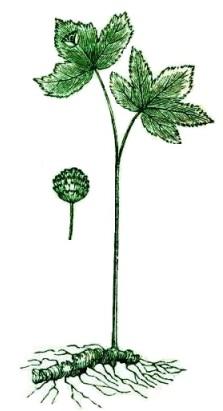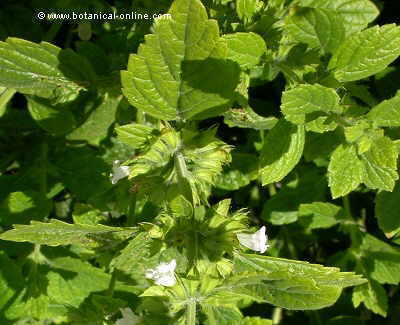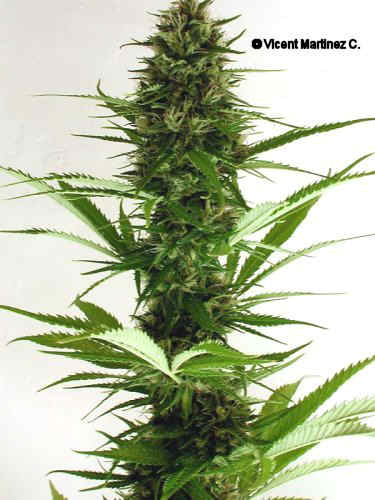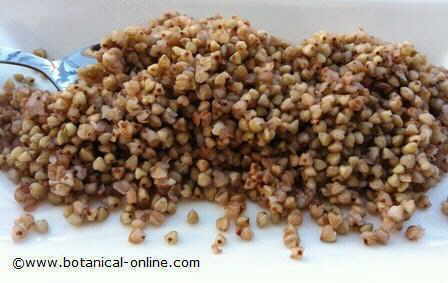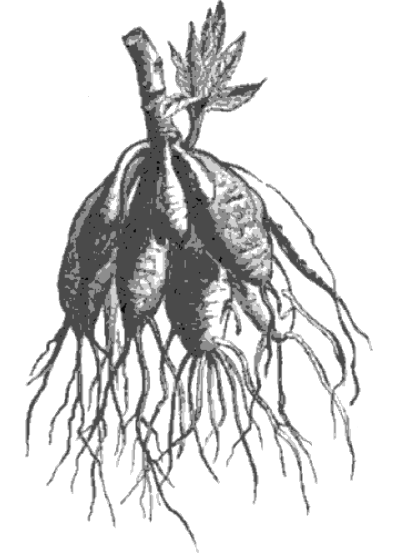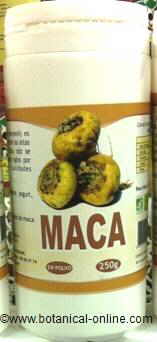Contents
How to grow lavender
THE CULTIVATION OF LAVENDER
Lavender. Characteristics
Perennial shrub of the lamiaceae family of up to 1.5 m. high. Woody stems bearing dense gray short pilosity.
Linear leaves, wider towards the apex or lanceolate, up to 10 cm in length with the edge usually revolute. The young leaves, hairy, smooth and greenish when adult.
Flowers gathered in spikes of violet light at the end of a very elongated flower stems. Spikes from 6 to 10 colored flowers without bracts at the apex, sticky to the touch because of the large amount of essential oil. Purple oval bracts and seven ribs.
They smell like camphor, being a stronger smell than in other lavenders.
It blooms from mid spring until the end of summer.
Lavender. Irrigation
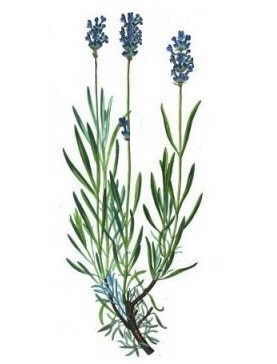
Botanical illustration of true lavender (Lavandula officinalis, Lavandula angustifolia)
In intensive plantations, lavender is a plant that holds the drought well. Planted in dry land, it only needs to be watered when planting the cuttings until they root well. Once on the ground, it has enough with rainwater, holding it up with a rainfall of 300 ml per year.
Plantations subjected to moderate water during the growing season increase production twice than those carried out on dry land. Drip irrigation is the best one.
Sprinkler irrigation, which can develop fungus, must be avoided
It can be planted in places with abundant rainfall; it can hold up to 1200 liters per year provided that the land has good drainage and water does not accumulate on the ground.
When the plant is used as flower pot, it needs rather moderate additional weekly watering.
Lavender. Use
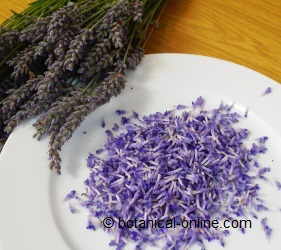
Lavander flowers
In intensive cultivation, it is cultivated for its flowers for essential oil extraction and as a medicinal plant.
It is a very valuable plant for bees and beekeepers to produce honey. Lavender honey is obtained from this plant, a product of white or golden color, creamy texture and strong aroma, somewhat sour taste. In some places, like Provence and Roussillon in France, it is one of the most common honey on the market.
As a garden plant, it is used for gardens, flowerbeds and terraces in the sun, preferably of dry nature. It is the ideal plant for decoration on rocky slopes, with sunny and dry calcareous soil. Also suitable as a plant for making low high hedges as it supports pruning.
Lavender. Climate and location
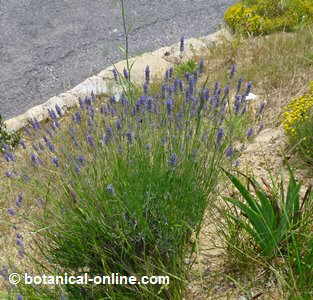
General aspect of lavender. It can be found in dry calcareous places either in the wild or as a decorative plant
In its natural habitat, lavender grows in dry, sunny soil, full of stones along with other shrubs. It prefers poor loose calcareous soils rather than deep and fertile ones. In these last soils, the plant grows but produces less essential oil.
The ideal site is one that allows for perfect drainage so, if possible, it is best planted on steep slopes, exposed to the sun, with light, loose sandy soils and a good ventilation. Clayey soils should be avoided and all those that allow water stagnation. Calcareous soils are the best to produce more scent and aroma.
It is a plant that must be cultivated in warm places, because, although it endures temperatures between – 10 and – 15 ° C, low temperatures do not favor the production of essential oils.
Lavender. Reproduction
* Reproduction of lavender by seeds
One way to propagate lavender is by seeds. Although it can be planted directly in the field, the most common is to do this in the nursery and then transplanting it into the final location. To do so, in warm climates, sow the seeds in autumn and transplant them in early spring. In cooler areas, it should be planted in spring and transplanted in late summer.
In colder areas, sowing may be performed in a greenhouse in spring. When the seedlings can be handled well, they will be transplanted in a pot that should be place indoors during the winter. In the late spring, they can be transplanted outdoors.
In all cases, to produce adequate seed germination, we should strive to maintain a constant humidity and a temperature between 11 and 30 º C. At an average of 15 º C germination occurs 30 to 90 days. We will use a light and very loose soil. The seeds will be covered lightly and will be watered frequently.
* Reproduction of lavender by cuttings
It is the most common way to propagate lavender. It is done in early spring, using soft cuttings about 15 cm in length.
In colder areas, planting will take place in mid-summer into boxes with semi-soft cuttings, being appropriate to protect the plants indoors during the winter for transplanting them in late spring in the final location.
One way or another, for good rooting, constant humidity should be maintained until the plants have rooted well.
* Reproduction of lavender by layering
It is done in late summer and consists of bending a branch stripped of leaves, buried in the substrate to produce roots. Once established, it is separated from the mother plant and transplanted into the final destination.
Lavender. Ground, fertilizer and tasks of maintenance
Lavender prefers loose soil so, before planting, you should plow the field well to a depth of about half a meter. At this point add manure.
During the winter fertilizer should be added at a rate of 200 kg / ha of potassium sulfate and calcium superphosphate and 300 kg / ha of ammonium sulfate. A dose of 10/10/10 fertilizer at a rate of 500 kg / ha in late winter can be interesting. Apply it as far as possible from the plants to prevent them to become burned.
For good production and maintenance of the plant it is necessary to keep the grass outside the plantation. Shallow plowing in early spring and a pair of plowings after a winter crop will help keep the area clean.
To encourage the roots of the plant during the first year you should pinch all the flowers. After collection and during the rest of their life cycle, which usually lasts about 10 years, it is important to cut all the branches to the height of leaf blades.
Harvesting and conservation of lavender flowers
The collection of flowers will take place from the second flowering year, between June and September.
Flowers must be cut on dry days.
They will be dried in the shade and stored in airtight, dry containers out of the light.
![]() More information on lavender.
More information on lavender.

